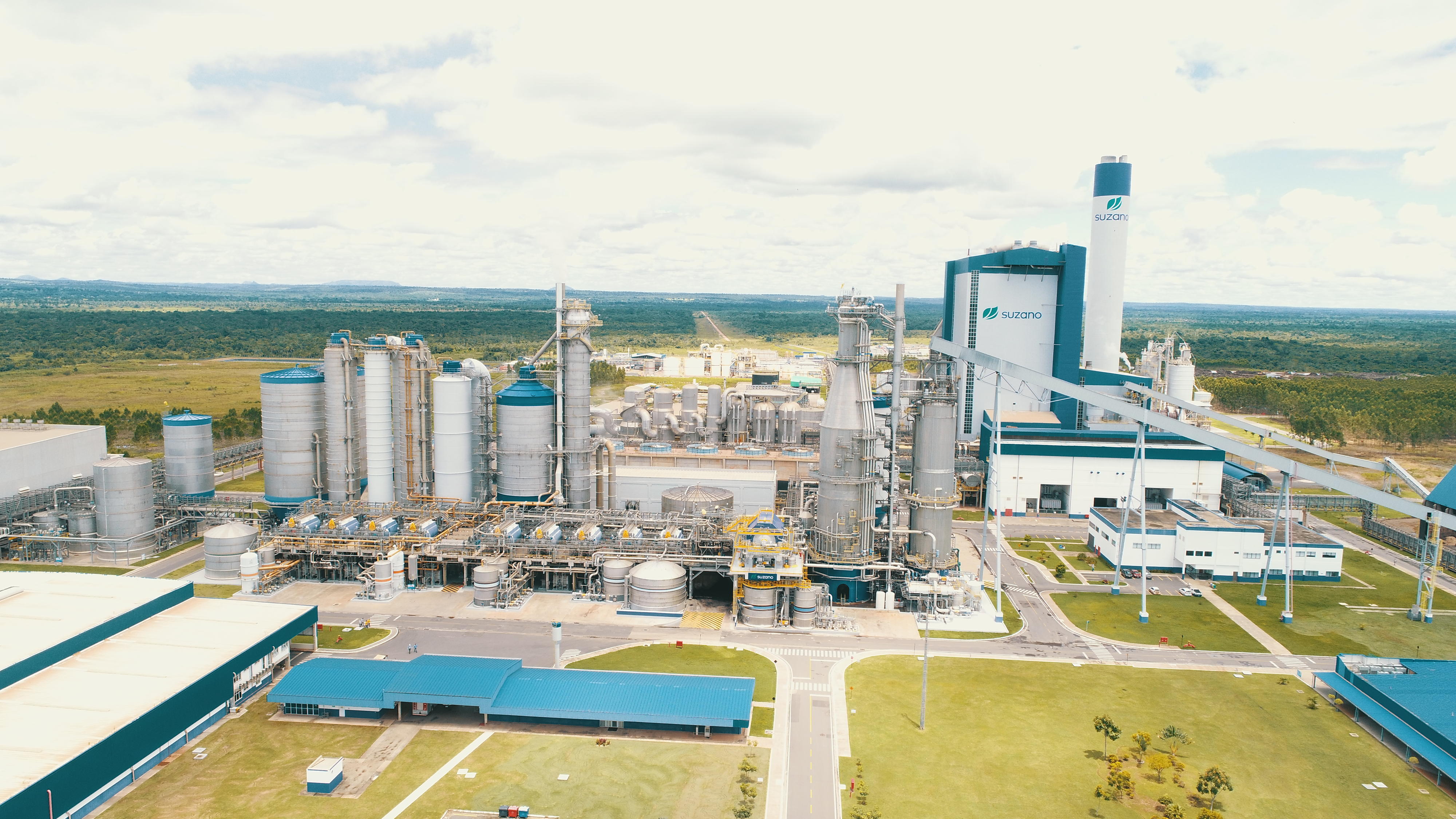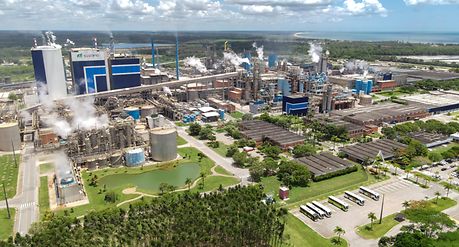Contact us!
Metris - ANDRITZ Digital Solutions
Headquarters, Austria
E-mail: metris@andritz.com
CONTACT US

Success Stories Suzano Imperatriz + ANDRITZ
The result of a long-standing partnership that has accompanied the Imperatriz plant since its inception, ANDRITZ and Suzano were responsible for implementing the boiler monitoring and optimization system, aimed at controlling alkaline loss and, above all, reducing the emission of inert substances.
In industrial environments, few factors are as important to factory operations as boilers. They are devices responsible for generating energy through the production and accumulation of steam at higher than atmospheric pressure. Used for centuries in a variety of circumstances, from heating water to producing steam, their purpose in the industrial context is to generate efficient energy over prolonged periods when the process is correctly optimized.
The Imperatriz Unit, located in the municipality of the same name, was officially inaugurated by Suzano in 2014, representing another positive milestone in the company's operations. Initially, the plant had a production capacity of 1.5 million tons/year and generated more than 100 MW of energy. With an occupied area of 1.5 million m², the plant currently produces around 1.8 million tons/year. Since its foundation, the plant has focused on pulp production and has a sustainable commitment dedicated to preserving the environment, which is a standard objective in all the company's actions.
However, as with any innovative experience, especially in the industrial sector, the new unit faced challenges common to the pulp industry. The main difficulties encountered were related to the optimization, monitoring and useful life of the boilers. According to Wellington dos Santos, a production consultant at the unit, there were frequent interruptions in boiler campaigns due to obstructions and fouling, generating significant operational instability.
With the aim of improving its operations and promoting a positive and efficient transformation at the plant, Suzano established a partnership with ANDRITZ in November 2014. This collaboration brings together the skills and experience of two market leaders to solve industrial problems. With regard to this partnership, Michael Mota, Recovery and Utilities Manager, emphasizes: "It's a good synergy. We have trained professionals who are confident in the tools they work with and, combined with our knowledge of the plant and the process, we are able to propose effective solutions for the constantly evolving process."
This joint effort, which began almost simultaneously with the inauguration of the plant in Imperatriz, resulted in two main innovative solutions to technical difficulties: Ash Leaching and Sticky Point. These two systems have been responsible for a notable improvement in operational efficiency over the last few years, representing a successful outcome of this partnership.
The two procedural implementations adopted by the ANDRITZ team to improve production at the Suzano Imperatriz unit were the Ash Leaching Control and the Sticky Point monitoring system. Both systems, aimed at monitoring and decision-making, have a significant impact on two main factors: alkaline loss and inert purging.
The Ash Leaching process is based on the difference in solubility of salts in water. This approach becomes relevant under specific conditions of temperature, pH and concentration, where sodium salts are less soluble than chloride and potassium (also known as "inert"). Thus, Ash Leaching acts to control the loss of sodium and, above all, to solubilize and remove these salts from the system.
Boilers exposed to high concentrations of chloride and potassium face serious problems, such as corrosion and blockage, which affect the superheater tubes and other parts of the equipment. These elements are also responsible for causing blockages, requiring regular tube cleaning and, in extreme situations, the unscheduled shutdown of the boiler to carry out the necessary maintenance.
"We have an Ash Leaching system that operates with very good availability, so we did preliminary work on it to guarantee the availability of this project," says Verciano about the Ash Leaching control developed by ANDRITZ, which acts directly to optimize the leaching process.
“Ash leaching is one of the most important systems in recovery boilers, as it determines how long the boiler's campaigns will last and even its integrity. This is because, if we have high levels (of chloride and potassium), we can have incrustations, limiting the campaign time, and even an attack on the metal systems, causing corrosion in the pipes and also reducing the useful life of the equipment.” - Wellington dos Santos, Production Consultant.
Sticky Point is a monitoring system that indicates the evolution of the liquid phase in the ash adhered to the tubes. According to Carlos Verciano, "the idea arose to control the boiler campaign a little more and to understand Sticky Point and its relationship with temperature, chloride and potassium".". Its purpose is to identify when the temperature approaches the point at which, as laboratory tests have indicated, corrosion problems begin to appear. This way, instead of an unscheduled equipment stoppage, operators and decision-makers can engage in preventive and remedial actions that ensure process continuity.
Job Camargo comments on the differential of this control, which is "the monitoring opportunity. Sticky Point makes it very clear what the control's ultimate goal is", so you can keep track of all previous actions and their progress.
Together with the local team at the Suzano Imperatriz unit, this project involved the participation of Rudi Modena and Alex Ribeiro, ANDRITZ's data scientist and automation and digitalization specialist, who, using ANDRITZ's capacity for development, innovation and technology, and its Metris program - in which resources are allocated to creating automation and optimization systems for manufacturing environments around the world - were responsible for devising the Sticky Point project, which was later made available by the ANDRITZ team to the unit's leaders.
Its algorithm was fed with the specific experiences of the industrial routine in Imperatriz. As described by Marcos Antônio, "Sticky Point makes it possible to monitor the risk of the boiler clogging and, with this, guides the decision making process in terms of adjusting the Ash Leaching chloride removal target."
The implementation of these systems at the unit was carefully planned and extensively studied, with the aim of guaranteeing the project's longevity and results. Using the internationally recognized Six Sigma Methodology, which is used to identify and implement improvements in companies' internal processes in order to reduce operating costs, increase efficiency and maximize profits, detailed mappings were made of all the stages. These analyses involved both statistical and qualitative aspects, making it possible to identify the fundamental causes of low efficiency in the useful life of boilers.
“With all the tools that Six Sigma brings to us, we were able to narrow down and get to our root causes." says Victoria Martins, Process Engineer during the period in which the project was developed.
The main challenges faced were the search for improved centrifuge performance and the removal of inerts, especially chloride. What made this operation extremely delicate was identifying the "optimum point" of the centrifuges (an essential component of the recovery boiler assembly) and, above all, the balance between pulp production, boiler production and the amount of inert that needed to be purged during the process.
Through collaboration and the constant exchange of experiences with other industrial plants, the case also relied on the remote support of Automation and Digitalization Analyst Cassio Lorenzoni, who worked on developing the solution and accompanied the implementation at the Imperatriz unit, combined with the technological and structural power presented by ANDRITZ, and with the full support of the Suzano team, the need to install two innovative systems was identified: Ash Leaching and Sticky Point. This decision arose from the realization that the action of chloride and potassium was corroding, obstructing and impairing the continuous operation of the boilers, which significantly impacted the plant's production capacity.
Once the systems have been implemented, the results show the importance and success of the work carried out. In concrete terms, Ash Leaching has led to a significant reduction in the levels of inert emissions and alkaline loss, resulting in a considerable reduction in expenditure on chemical inputs. According to Marcos Antônio, SCDC Operator, "The project improved the efficiency of chloride removal from the ash, keeping the values below 2.5%. As a result, we were able to increase the boiler's campaign time." Campaigns, which previously lasted around 15 months, now reach 18 months using the controls.
Sticky Point, on the other hand, is constantly evolving based on the daily experiences provided to the monitoring software, which enable greater automation and case knowledge, and has played a key role in offering a dynamic, real-time view of the health of the recovery boiler, as well as all the processes taking place in it. It became especially valuable for the unit's operations team and process engineers, allowing them to focus on other adjustments as the systems became more independent.
Together, the two systems have been responsible for accumulated savings of more than 3 million reais. Jhonatas Santos evaluates the financial results of reducing the use of chemical products, saying: "We have reduced the standard deviation in alkaline loss, achieving the targets set by the plant and causing it to consume less soda. As a result, the unit will make financial gains by reducing costs with chemical inputs."
Carlos Verciano, current Executive Manager of Recovery and Utilities, points out that one of the differentials of this project is innovation: "He was innovative. It takes a little longer because it needs to mature. Because he's innovative, we're ahead. I'm not aware that this project exists in any other company. It shows that Imperatriz is on the map and that it promotes not only social economic growth in the region, but also takes our name to the world."
As mentioned by Automation Analyst Jhonatas Santos, "The work is always done by identifying opportunities together with the client, making them much more prosperous." ". As mentioned by Automation Analyst Jhonatas Santos, "The work is always done by identifying opportunities together with the client, making them much more prosperous." As mentioned by Automation Analyst Jhonatas Santos, "The work is always done by identifying opportunities together with the client, making them much more prosperous." Leading the ANDRITZ team at the Imperatriz unit, Israel Junior understands that "innovation is built with four hands. With each project, our partnership with the client grows stronger.".
Metris - ANDRITZ Digital Solutions
Headquarters, Austria
E-mail: metris@andritz.com
CONTACT US

